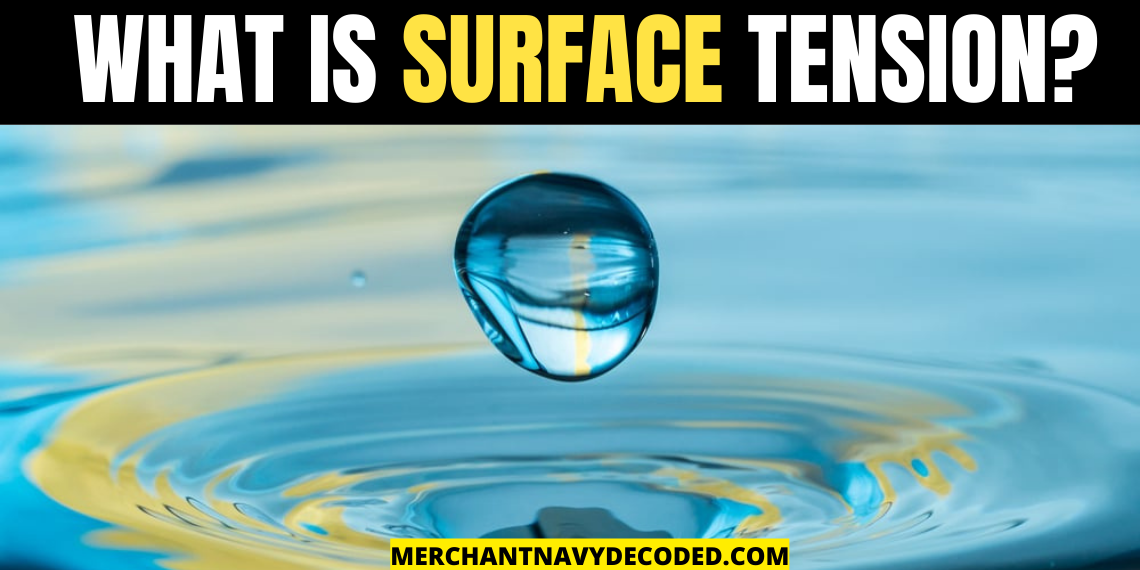What is Surface tension? Why does surface tension occur?
Definition: Surface tension is the tendency of fluid surfaces to shrink into the minimum surface area (sphere).
There are two properties due to which surface tension occurs
- Cohesive force: Intermolecular forces of the same substance are known as cohesive force.

Think of mercury, if you throw mercury on the floor you will see that it will form droplets and stick together and if you further try to break the molecules they will further form smaller droplets in sphere shape.
Another example is chewing gum, it has a very strong cohesive force, when we start chewing it will not tear apart and stick together.
2. Adhesive force: Intermolecular forces between molecules of two different substances are known as adhesive force.

For example, take a glass of water and throw the water in a basin, now look at the glass you will see that some water particles are present at the glass, this is due to the adhesive force being stronger than the cohesive force of water. But in the case of mercury if you throw away the mercury from the glass there will be no particles left in the glass because the cohesive force of mercury is very strong as compared to the adhesive force of water.
Why does surface tension occur

When molecules of water come in contact with molecules of air, water tries to restrict itself in its own particles because of its stronger cohesive force than air, due to this reason there will be tension in the surface of the water which is known as surface tension.
Applications of surface tension
- Mosquitoes float on water and sink in kerosene: Mosquitoes are able to float on the surface of water due to their small size and the surface tension of the water. However, they sink in kerosene because kerosene has a lower surface tension than water this is because the, cohesive forces between the molecules are weaker. As a result, the surface of kerosene is not able to support the weight of the mosquito, causing it to sink.
It is important to note that mosquitoes are not able to swim in either water or kerosene, but instead they move by using their legs to push against the surface of the liquid.
2. Detergents lower surface tension of water: Detergents are able to lower the surface tension of water by disrupting the cohesive forces between water molecules at the surface of the liquid.
This is called the “surfactant” effect, where the surface tension of the water is lowered and the water is able to more easily wet surfaces and penetrate fabrics. This is why detergents are effective at cleaning dirt and oil from surfaces, as they are able to break down the cohesive forces between these substances and the surface they are stuck to.
Note:
If you want to learn more about this topic, we suggest checking out our Combo package with the given link https://merchantnavydecoded.com/courses/c/ . It’s a great way to dive deeper into the subject through video explanations. This package covers all the important details and presents them in an easy-to-understand format. Watching the videos will help you grasp the topic better and make learning more enjoyable. So, we highly recommend giving our Combo package a try to enhance your knowledge on the subject.
Disclaimer :- The opinions expressed in this article belong solely to the author and may not necessarily reflect those of Merchant Navy Decoded. We cannot guarantee the accuracy of the information provided and disclaim any responsibility for it. Data and visuals used are sourced from publicly available information and may not be authenticated by any regulatory body. Reviews and comments appearing on our blogs represent the opinions of individuals and do not necessarily reflect the views of Merchant Navy Decoded. We are not responsible for any loss or damage resulting from reliance on these reviews or comments.
Reproduction, copying, sharing, or use of the article or images in any form is strictly prohibited without prior permission from both the author and Merchant Navy Decoded.





Great article 👍